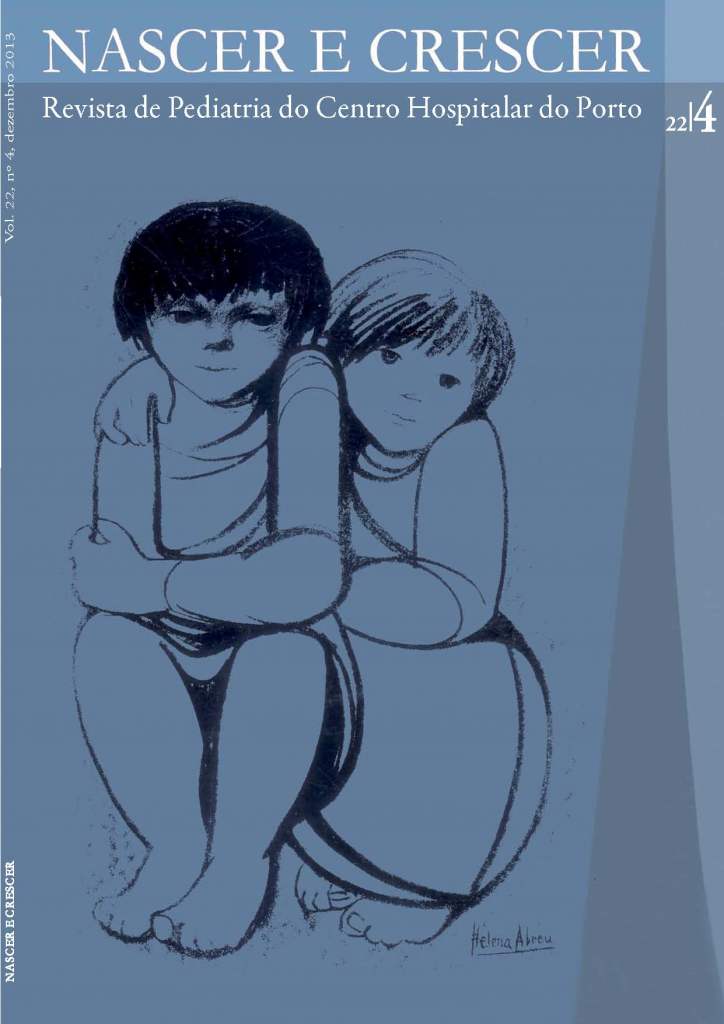Infeção tardia por streptococcus agalactiae – um caso de artrite séptica neonatal
DOI:
https://doi.org/10.25753/BirthGrowthMJ.v22.i4.9896Keywords:
Group B streptococcus screening, late-onset group B streptococcus disease, newborn, pregnancy, septic arthritisAbstract
Introduction: The incidence of early -onset group B streptococcus (GBS) disease has decreased substantially due to universal antenatal culture screening of pregnant women for GBS colonization at 35 -37 weeks of gestation and the widespread use of intrapartum antibiotic prophylaxis. However, the incidence of late-onset GBS disease has remained constant in the past decade and it is unaffected by maternal intrapartum chemoprophylaxis. Late-onset GBS infection affects infants who had an unremarkable maternal obstetric and early neonatal history. Other sources rather than vertical route, like horizontal transmission from hospital or community, albeit less frequently proved, can justifies late onset GBS disease.
Case report: This case report illustrates a late-onset GBS disease, presenting as neonatal septic arthritis on a caucasian term infant, with unknown route of transmission and highlights the morbidity associated.
Discussion: Additional research pertaining to the transmis- sion of late-onset GBS infections is required to develop effective preventive methods.
Downloads
References
Edwards MS, Nizet V, Baker C. Group B streptococcal infec-
tions. In: Remington JS, Klein JO, CB (eds), et al. Infectious
Diseases of the Fetus and Newborne Infant. 7th Ed. Elsevier
Saunders; 2011:419 -58.
Verani JR, McGee L, Schrag SJ, Division of Bacterial Dise-
ases, National Center for Immunization and Respiratory Di-
seases, Centers for Disease Control and Prevention (CDC).
Prevention on perinatal group B streptococcal disease – revi-
sed guidelines from CDC, 2010. MMWR Recomm Rep 2010;
:1.
Campbell JR, Hillier SL, Krohn MA, Ferrieri P, Zaleznik DF,
Baker CJ. Group B streptococcal colonization and serotype-
-specific immunity in pregnant women at delivery. Obstet Gy-
necol 2000; 96:498 -503.
Schrag SJ, Zywicki S, Farley MM, Reingold AL, Harrison LH,
Lefkowitz LB, et al. Group B streptococcal disease in the era
of intrapartum antibiotic prophylaxis. N Engl J Med 2000;
:15 -20.
Jordan HT, Farley MM, Craig A, Mohle -Boetani J, Harrison
LH, Petit S, et al. Revisiting the need for vaccine prevention
of late -onset neonatal group B streptococcal disease: a mul-
tistate, population -based analysis. Pediatr Infect Dis J 2008;
:1057 -64.
Phares CR, Lynfield R, Farley MM, Mohel -Boetani J, Harrison
LH, Petit S, et al. Epidemiology of invasive group B strepto-
coccal disease in the United States, 1999 -2005. JAMA 2008;
:2056 -65.
Deshpaud SS, Taral N, Modi N, Singrakhia, M. Changing epi-
demiology of neonatal septic arthritis. J Orthop Surg 2004;
:10 -3.
Morinis J, Shah J, Murthy P, Fulford M. Horizontal transmis-
sion of group B streptococcus in a neonatal intensive care
unit. Paediatr Child Health 2011; 16:e48 -e50.
Cagno CK, Pettit JM, Weiss BD. Prevention of perinatal
group B strptococcal disease: Updated CDC Guideline. Am
Fam Physician 2012; 86:59 -65.
Fernandez M, Rench MA, Albanyan EA, Edwards MS, Baker
CJ. Failure of rifampin to eradicate group B streptococcal co-
lonization in infants. Pediatr Infect Dis J 2001; 20:371 -6.
Downloads
Published
How to Cite
Issue
Section
License
Copyright and Authors' Rights
All articles published in Nascer e Crescer - Birth and Growth Medical Journal are Open Access and comply with the requirements of funding agencies or academic institutions. For use by third parties, Nascer e Crescer - Birth and Growth Medical Journal adheres to the terms of the Creative Commons License "Attribution - Non-Commercial Use (CC-BY-NC)".
It is the author's responsibility to obtain permission to reproduce figures, tables, etc. from other publications.
Authors must submit a Conflict of Interest statement and an Authorship Form with the submission of the article. An e-mail will be sent to the corresponding author confirming receipt of the manuscript.
Authors are permitted to make their articles available in repositories at their home institutions, provided that they always indicate where the articles were published and adhere to the terms of the Creative Commons license.


